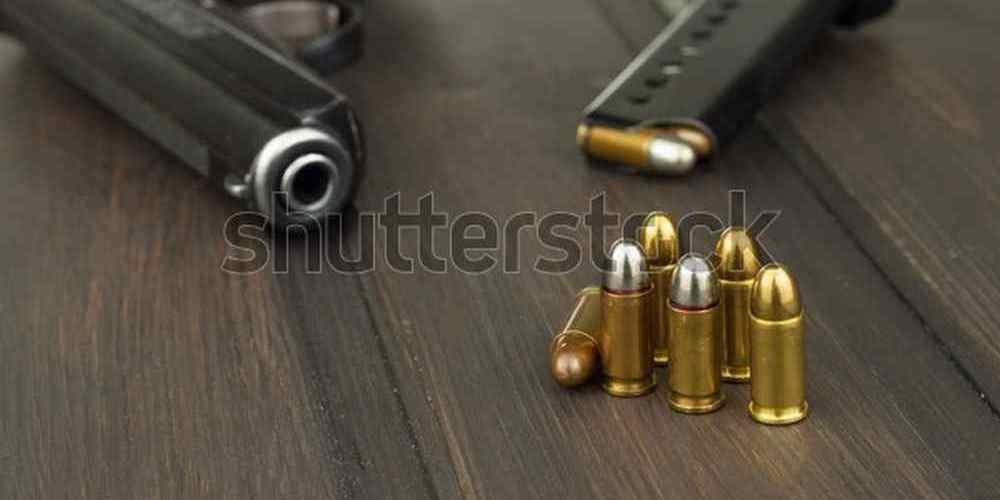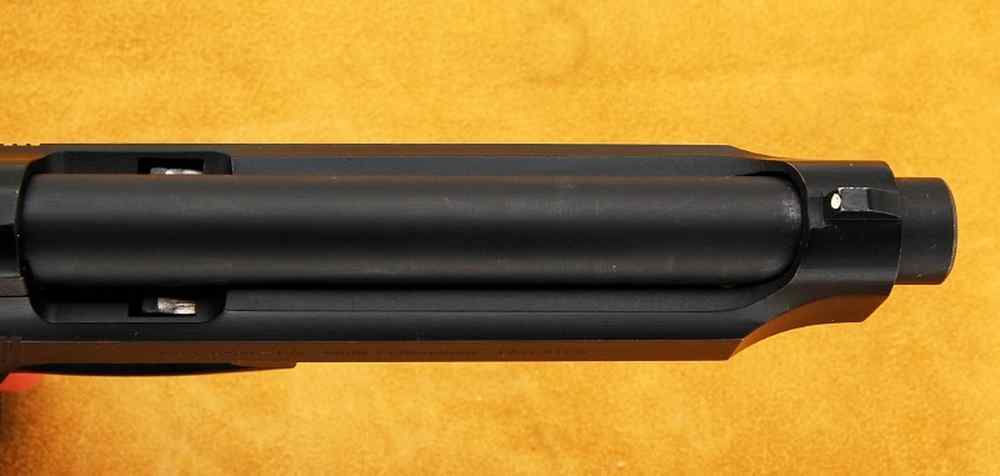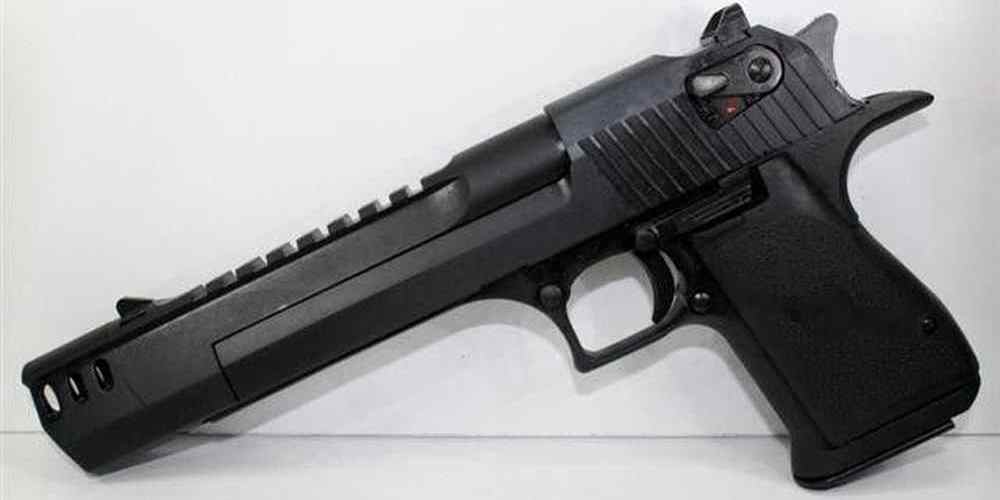“Testing the limits of semi-auto ammunition performance.”
Accuracy Testing Methods for Semi-Auto Ammunition
When it comes to testing the performance of semi-auto ammunition, accuracy is a key factor to consider. Whether you are a competitive shooter, a hunter, or just a firearms enthusiast, knowing how to gauge the accuracy of your ammunition can help you make informed decisions about which rounds to use in different situations. In this article, we will explore some common methods for testing the accuracy of semi-auto ammunition and provide tips on how to interpret the results.
One of the most common methods for testing the accuracy of semi-auto ammunition is to shoot groups at a target. This involves firing a series of shots at a target from a fixed position and measuring the distance between the center of each shot. The smaller the group size, the more accurate the ammunition is considered to be. When conducting group testing, it is important to use a stable shooting platform, such as a bench rest or sandbags, to eliminate as much human error as possible.
Another method for testing the accuracy of semi-auto ammunition is to shoot at different distances. By shooting at various distances, you can determine how well the ammunition performs at different ranges. This can be particularly useful for hunters who need to know how their ammunition will perform at both short and long distances. When testing at different distances, it is important to use a consistent aiming point and shooting technique to ensure accurate results.
In addition to shooting groups and testing at different distances, another method for gauging the performance of semi-auto ammunition is to conduct a chronograph test. A chronograph is a device that measures the velocity of a bullet as it leaves the barrel of a firearm. By measuring the velocity of a series of shots, you can determine the consistency of the ammunition and identify any outliers that may affect accuracy. Chronograph testing can be particularly useful for competitive shooters who need to ensure that their ammunition meets specific velocity requirements.
When interpreting the results of accuracy testing, it is important to consider a few key factors. First, it is important to remember that accuracy is not solely determined by the ammunition itself. Factors such as the quality of the firearm, the shooter’s skill level, and environmental conditions can all affect accuracy. Additionally, it is important to consider the intended use of the ammunition when evaluating its performance. For example, ammunition that performs well at short distances may not be suitable for long-range shooting.
In conclusion, testing the accuracy of semi-auto ammunition is an important step in ensuring optimal performance. By using methods such as shooting groups, testing at different distances, and conducting chronograph tests, you can gain valuable insights into the performance of your ammunition. Remember to consider factors such as firearm quality, shooter skill, and intended use when interpreting the results of accuracy testing. By taking the time to gauge the performance of your ammunition, you can make informed decisions about which rounds to use in different shooting scenarios.
Reliability Testing Procedures for Semi-Auto Ammunition
When it comes to semi-auto ammunition, reliability is key. Whether you are a seasoned shooter or a beginner, understanding how to gauge the performance of your ammunition is crucial for a successful shooting experience. In this article, we will discuss some testing procedures that can help you determine the reliability of your semi-auto ammunition.
One of the first things you should do when testing the performance of your semi-auto ammunition is to check for proper feeding. This involves loading a magazine with the ammunition and cycling it through your firearm. Pay close attention to how smoothly the ammunition feeds into the chamber and whether there are any jams or malfunctions. If you encounter any issues, it may be a sign that the ammunition is not reliable enough for your needs.

Another important aspect to consider when testing semi-auto ammunition is its accuracy. To gauge the accuracy of your ammunition, you can set up targets at various distances and fire a series of shots to see how consistently the ammunition performs. Keep in mind that factors such as wind, humidity, and shooter skill can also affect accuracy, so it is important to take these into account when evaluating your results.
In addition to feeding and accuracy, it is also important to test the reliability of your semi-auto ammunition under different conditions. This can include testing the ammunition in extreme temperatures, wet conditions, or after prolonged storage. By subjecting your ammunition to these tests, you can get a better idea of how it will perform in real-world scenarios.
One of the best ways to gauge the performance of your semi-auto ammunition is to conduct a reliability test. This involves firing a large number of rounds through your firearm to see how well the ammunition holds up over time. Pay attention to any malfunctions, misfires, or other issues that may arise during the test. This will give you a good indication of the overall reliability of the ammunition.
When conducting a reliability test, it is important to use a variety of ammunition brands and types to get a comprehensive understanding of their performance. Keep detailed records of each test, including the number of rounds fired, any malfunctions encountered, and any other relevant information. This will help you make informed decisions about which ammunition is best suited for your needs.
In conclusion, testing the performance of your semi-auto ammunition is essential for ensuring a successful shooting experience. By checking for proper feeding, accuracy, and reliability under different conditions, you can gain valuable insights into the performance of your ammunition. Conducting a reliability test with a variety of ammunition brands and types will help you make informed decisions about which ammunition is best suited for your needs. Remember to keep detailed records of your tests and always prioritize safety when handling firearms and ammunition.
Velocity and Energy Measurements for Semi-Auto Ammunition
When it comes to semi-auto ammunition testing, one of the key factors to consider is the velocity and energy of the rounds. Understanding how these measurements can impact the performance of your firearm is crucial for ensuring accuracy and reliability in your shooting experience.
Velocity is a measure of how fast a bullet travels from the muzzle of the gun to the target. It is typically measured in feet per second (fps) or meters per second (mps). The velocity of a bullet can have a significant impact on its trajectory, accuracy, and stopping power. Higher velocity rounds tend to have flatter trajectories and more energy upon impact, making them ideal for long-range shooting or hunting larger game.
Energy, on the other hand, is a measure of the force that a bullet carries as it travels through the air. It is typically measured in foot-pounds (ft-lbs) or joules (J). The energy of a bullet is directly related to its velocity and weight, with heavier bullets typically carrying more energy than lighter ones. Higher energy rounds are more effective at penetrating barriers and delivering stopping power to the target.
When testing the velocity and energy of semi-auto ammunition, it is important to use a chronograph to accurately measure these metrics. A chronograph is a device that uses sensors to track the speed of a bullet as it passes through a set of screens. By recording the time it takes for the bullet to travel between the screens, the chronograph can calculate the velocity of the round with a high degree of accuracy.
To test the velocity and energy of your semi-auto ammunition, set up the chronograph at a safe distance from your shooting position. Fire a series of rounds through the chronograph, making sure to aim consistently and avoid any obstructions that could affect the readings. Record the velocity and energy measurements for each round, taking note of any variations or anomalies that may indicate issues with the ammunition or firearm.
Once you have collected the data from your velocity and energy tests, analyze the results to determine the performance of the semi-auto ammunition. Look for consistency in velocity and energy measurements, as well as any trends that may indicate optimal performance for your firearm. Compare the results to the manufacturer’s specifications for the ammunition to ensure that it is performing as expected.
If you notice any discrepancies or inconsistencies in the velocity and energy measurements, consider adjusting your shooting technique or equipment to improve accuracy and reliability. Experiment with different loads and bullet weights to find the optimal combination for your firearm, taking into account factors such as barrel length, twist rate, and shooting distance.
By testing the velocity and energy of your semi-auto ammunition, you can gain valuable insights into its performance and make informed decisions about the best loads for your firearm. With accurate measurements and careful analysis, you can optimize your shooting experience and achieve greater accuracy and reliability in your shooting endeavors.
Recoil and Muzzle Rise Analysis for Semi-Auto Ammunition
When it comes to semi-automatic firearms, one of the key factors that shooters often consider is the performance of the ammunition being used. Recoil and muzzle rise are two important aspects that can greatly affect the overall shooting experience. Understanding how to gauge the performance of semi-auto ammunition in terms of recoil and muzzle rise can help shooters make informed decisions when selecting ammunition for their firearms.
Recoil, also known as kickback, is the backward movement of a firearm when it is fired. It is caused by the force of the expanding gases pushing the bullet out of the barrel. The amount of recoil experienced by a shooter can vary depending on factors such as the caliber of the ammunition, the weight of the firearm, and the design of the gun. Recoil can affect accuracy and control, so it is important to choose ammunition that produces manageable recoil.
Muzzle rise, on the other hand, refers to the upward movement of the firearm’s muzzle when it is fired. Muzzle rise is caused by the force of the recoil pushing the firearm upward. Excessive muzzle rise can make it difficult for shooters to maintain their sight picture and quickly reacquire their target. Choosing ammunition that minimizes muzzle rise can help shooters stay on target and improve their shooting performance.
One way to gauge the performance of semi-auto ammunition in terms of recoil and muzzle rise is to conduct testing using a chronograph. A chronograph is a device that measures the velocity of a bullet as it leaves the barrel of a firearm. By measuring the velocity of different types of ammunition, shooters can get an idea of how much recoil and muzzle rise to expect when firing each type of ammo.
Another important factor to consider when testing semi-auto ammunition is the weight of the bullet. Heavier bullets typically produce more recoil and muzzle rise than lighter bullets. Shooters should experiment with different bullet weights to find the right balance between recoil and performance for their specific needs.
In addition to bullet weight, the powder load of the ammunition can also affect recoil and muzzle rise. Ammunition with a higher powder load will generally produce more recoil and muzzle rise than ammunition with a lower powder load. Shooters should test different types of ammunition with varying powder loads to determine which produces the most manageable recoil and muzzle rise for their shooting style.
It is also important to consider the design of the firearm when testing semi-auto ammunition. Some firearms are designed to minimize recoil and muzzle rise, while others may be more prone to these effects. Shooters should take into account the specific characteristics of their firearm when selecting ammunition for testing.
Overall, gauging the performance of semi-auto ammunition in terms of recoil and muzzle rise is essential for shooters looking to improve their shooting experience. By conducting thorough testing using a chronograph and experimenting with different bullet weights and powder loads, shooters can find the right balance between performance and manageability. Choosing ammunition that minimizes recoil and muzzle rise can help shooters stay on target and enhance their shooting skills.
Comparison of Different Semi-Auto Ammunition Brands
When it comes to choosing the right ammunition for your semi-automatic firearm, there are a variety of factors to consider. From bullet weight and velocity to accuracy and reliability, each brand of ammunition offers its own unique set of characteristics. In this article, we will explore how to gauge the performance of different semi-auto ammunition brands to help you make an informed decision.
One of the most important factors to consider when testing semi-auto ammunition is accuracy. The ability of a round to consistently hit its target is crucial for both hunting and self-defense purposes. To test the accuracy of different ammunition brands, it is recommended to shoot groups of rounds at various distances and record the results. Pay attention to the size of the groupings and any flyers that may occur. This will give you a good indication of how each brand performs in terms of accuracy.
Another important factor to consider when testing semi-auto ammunition is reliability. A reliable round should feed, fire, and eject without any issues. To test the reliability of different ammunition brands, it is recommended to shoot a large number of rounds through your firearm and pay attention to any malfunctions that may occur. Look for any failures to feed, failures to fire, or failures to eject. This will give you a good indication of how each brand performs in terms of reliability.
In addition to accuracy and reliability, it is also important to consider the velocity of different semi-auto ammunition brands. Velocity refers to the speed at which a bullet travels downrange and can have a significant impact on both terminal ballistics and trajectory. To test the velocity of different ammunition brands, it is recommended to use a chronograph to measure the speed of the bullets as they leave the barrel. This will give you a good indication of how each brand performs in terms of velocity.
Bullet weight is another important factor to consider when testing semi-auto ammunition. The weight of a bullet can affect its trajectory, penetration, and terminal ballistics. To test the bullet weight of different ammunition brands, it is recommended to weigh the bullets before shooting them and compare the results. Pay attention to any variations in weight and how they may affect performance. This will give you a good indication of how each brand performs in terms of bullet weight.
In conclusion, when testing semi-auto ammunition, it is important to consider a variety of factors including accuracy, reliability, velocity, and bullet weight. By carefully evaluating these characteristics, you can gauge the performance of different ammunition brands and make an informed decision about which one is right for you. Remember to shoot groups for accuracy, test for reliability with a large number of rounds, measure velocity with a chronograph, and weigh bullets to compare bullet weight. With these tips in mind, you can confidently choose the best semi-auto ammunition for your needs.







